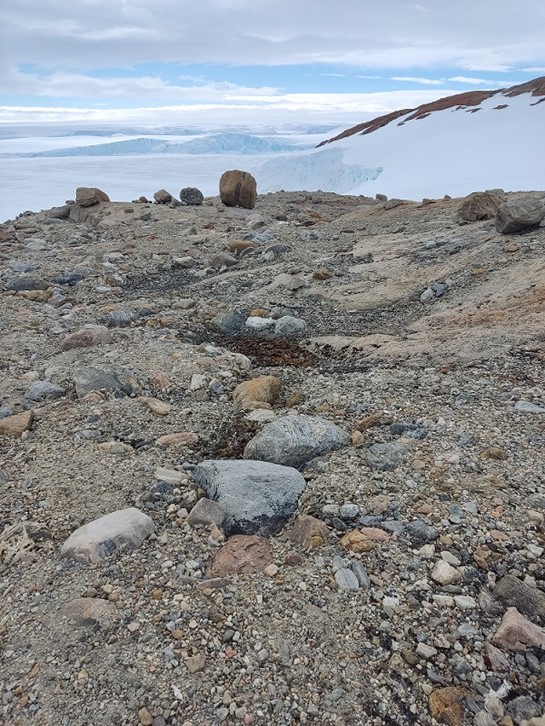
Scientists of the Institute of Environmental Management of the NAS of Belarus (doctor of technics professor S.V. Kakareka, doctor of geography T.I. Kukharchyk and junior researcher K.O. Rabychyn) for the first time performed a study of the content of microplastics in lakes and soils of the oases of East Antarctica.
The problem of microplastics has become truly global in recent years. Microplastic particles have been recorded in various natural components of Antarctica and the Southern Ocean, including marine and terrestrial biota. Therefore, attention is increasing to the environmental pollution of this region by plastics and microplastics and the consequences for the unique polar ecosystems and biota. But the level of knowledge of microplastic pollution in Antarctica remains generally low, and moreover uneven. East Antarctica has hardly been studied in this regard. Therefore, the study of this problem, carried out by Belarusian scientists, is of particular interest. It allowed us to obtain the first estimates of the content of microplastic particles (less than 5 mm) in soils and freshwater reservoirs of the oases of East Antarctica using the example of the Vecherny Oasis of Enderby Land.
Soil and water samples from freshwater lakes of the oasis selected during the 14th (2021/2022) and 15th (2022/2023) Belarusian Antarctic expeditions were analyzed. The study revealed that microplastic particles are present in all analyzed samples, even those taken at relatively remote locations. In most cases, fibers dominate in shape.
This work was carried out within the framework of the Antarctic program for 2021–2025. The research methods and the results obtained are presented in recently published articles in scientific journals.*
The study of microplastic pollution of the oases of East Antarctica, which began only two years ago, will continue. It will allow for a better understanding of the processes of its migration and accumulation in the environment, taking into account the landscape and geographical features of the studied areas of Antarctica. It is also planned to study the sources of various types of plastics entering the environment at scientific Antarctic stations, including the processes of destruction/wear of infrastructure and vehicles.
________________________________________________________________________________________________________________________________________________________
* Kukharchyk T. I., Kakareka S. V., Rabychyn K. O. Microplastics in Soils of the Thala Hills, East Antarctica // Eurasian Soil Science, 2024, Vol. 57, No. 3, pp. 502–512. DOI: 10.1134/S1064229323603025
С.В. Какарека, Т.И. Кухарчик, К.О. Рябычин. Микропластик в водоемах прибрежных оазисов Восточной Антарктиды (на примере оазиса Холмы Тала, Земля Эндерби). Доклады Национальной академии наук. 2024, т. 68, №. 1, с. 72–78. DOI: 10.29235/1561-8323-2024-68-1-72-78.